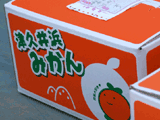
from the prologue

"Route 134, Miura-shi, Hasse-machi"
ch. 3, 24, 37 and 122.
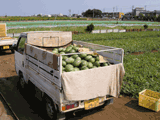
(Watermelons grown in Miura peninsula.)
I have stripes ('shima-shima'). I am round and heavy ('goro-goro'). Who am I?
Spherical watermelons with green and black stripes are most typical in Japan. Watermelons are often used as a symbol of summer in manga.
ch. 5 etc.
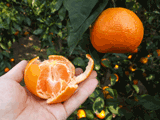
Mikan is a kind of orange. It is also called satsuma in some English-speaking countries. (Japanese people never call it satsuma.)
Mikan boxes appear in chapters 24 and 64.
ch. 6 and 75.
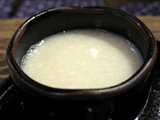
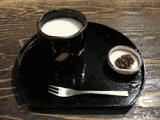
Amazake is a sweet non-alcoholic drink made from rice. It is usually served hot.
ch. 6 and 115.
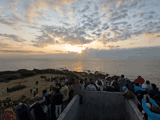
In Japan, there is a custom of seeing year's first sunrise. I don't know why.
ch. 9.
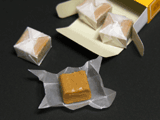
Kyarameru is the Japanese word for caramel candy.
In Chapter 9, Kokone says "kyarameru-like things". They may or may not be caramel candies.
ch. 10 etc.
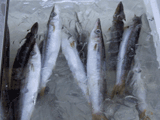
The fish we call kamasu today is a small kind of barracuda. No, it does not fly.
ch. 13, 20 etc.
There are a lot of black kites in Miura Peninsula.
ch. 14, 17, 54
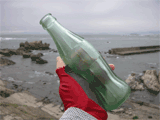
This one was washed up on Hayama Isshiki beach, Miura Peninsula.
ch. 23, 65
The crab Misago ate in chapter 23 looks to be an akategani.

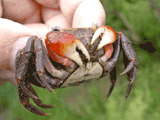
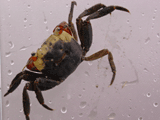
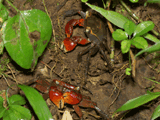
This kind of crab is not usually used for food.
ch. 28

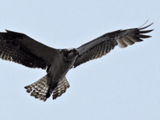
Misago is the Japanese name of osprey. Its irises of the eyes are yellow. Above picture was taken at Koajiro bay, Miura peninsula.
ch. 29
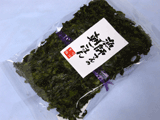


Haba-nori is a species of nori, a type of sea vegetable. Above pictures show dried habanori sold in a paper-like form. Haba-nori is consumed only around coastal areas. It grows wild on rocks in the sea. Its flavor is subtle compared to cultivated species of nori.
Haba-nori lunch set by restaurant Maruyoshi.
Haba-nori is served slightly parched and shredded.
Before eating, you pour soy sauce on shredded habanori, mix it, and put it on the rice.
They say this is the most common way of eating habanori in Miura penisula.
I put some habanori on my miso soup. Takahiro and Makki's miso soup should look like this.
Above picture shows habanori being dried. The landlady of Maruyoshi is working.
ch. 30, 35, 75, 84 etc.Susuki (Miscanthus sinensis)
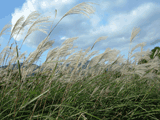
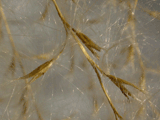

Susuki is a kind of grass. It is often referred to as "Japanese pampas grass" but it is not a kind of pampas grass.
The ear of susuki grass is a symbol of autumn. Susuki grass grows wild and is usually regarded as a weed, but some Japanese gardens keep it.
Hachijo-susuki (ch. 84) is susuki's coastal variant (Miscanthus sinensis var. condensatus).
ch. 34, 65, 74 etc.

ch. 35 and 101
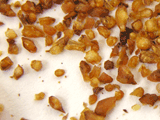

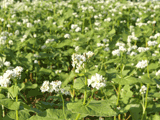
Sobacha is a tea-like drink made from buckwheat. It does not contain caffeine. It is usually served hot, without sugar.
Sobacha was not particularly popular when chapter 35 of YKK was first printed (May 1997). Ito En's bottled sobacha made it popular (since Dec. 2002). It is not still as popular as mugicha. Bottled sobacha is sold cold.
ch. 39, 93 and others
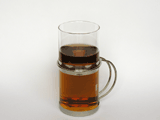
Mugicha is a tea-like drink made from barley. It does not contain caffeine. It is not usually sweetened. Mugicha is usually served cold in the summer. Some people like hot mugicha.
You can buy bottled mugicha everywhere in Japan. Left: Ito En's, Right: Kagome's. They are sold cold.
ch. 42, 57 etc.
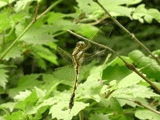
This photo was taken on May 2, 2005.
Shiokara-tonbo can be seen from late spring to early autumn but they do not swarm.
You can see some swarm of usubakitonbo flying around in the summer.
Usuba-ki-tonbo is also known as "wandering glider" or "globe skimmer".
In the autumn, a lot of akiakane fly around. They don't show up in the spring.
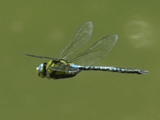
Kurosujiginyanma shows up in spring. It is much bigger than Alpha's harutonbo and is rarely seen perching.
ch. 42 and 57
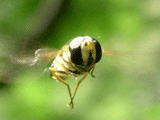
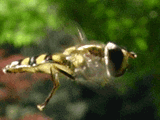
Also called flower fly. It's normal to see this kind of flies in the spring.
ch. 53


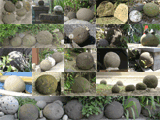
Koumiishi are naturally formed spherical rocks found in Akiya, Miura peninsula. People who live in Akiya put them near the entrance of their houses. It seems like some kind of charm.
There is a bus stop named after these rocks. (-> googlemaps)
Note that the kanji 'umi' is different from that of Sensei's surname.
Some koumiishi also appear in the chapter 4 of "PositioN", Ashinano's another series of manga.
ch. 62
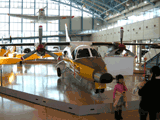
This Mitsubishi MU-2 was used as a search-and-rescue aircraft.
This one is in Hamamatsu air base of Japan Air Self-Defense Force.
ch. 3, 67, 73
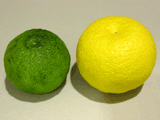

Yuzu is a kind of citrus used like lemon or lime. The fruit is as small as a golf ball.
100% yuzu juice is ten times more expensive than Coca-Cola. It is for seasoning, not for drink.
ch. 68, 70, 73, 90, 114
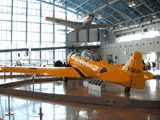
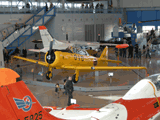
North American T-6 Texan is a trainer, not a fighter. Nai's "AT-6" is basically the same as T-6.
Above one is displayed at Hamamatsu air base.
SNJ-6 is the navy version of Texan. This one is displayed at Atsugi air base.
ch. 69, 86, 92
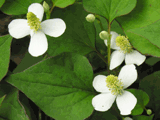
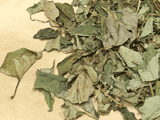
Dokudamicha is a tea-like drink made from dried leaves of dokudami. It does not contain caffeine.
I haven't tried it yet.
ch. 71
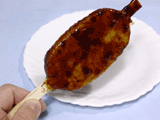
It is made of rice!
ch. 66


ch. 66

Hiyodori is a member of the bulbul family of passerine birds.
It flies in a wave-like pattern. The call is like "pee-yo pee-yo" or "hee-yo hee-yo".
ch. 66
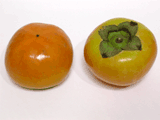
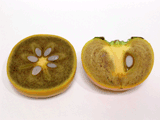
There are many cultivars of kaki. This cultivar is called 'Nishimura-wase'.
Small and big kind of kaki. Even the bigger one is not as big as Alpha's.
Some Japanese people grow kaki trees in their home garden and harvest more than they can consume. If you are lucky enough to have such a neighbor, you can get some kaki fruit for free like Alpha did. I haven't been as lucky as Alpha.
(A flower and leaves of kaki)
ch. 72
ch. 73
Japanese style roast corn. Soy sauce-based sauce is used.
ch. 78, 92 etc.
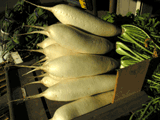
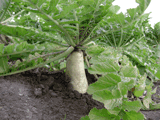
(Daikon grown by Takaiku Farm, Miura peninsula)
Daikon is a kind of radish. It may look like giant white carrot but it tastes radish.
ch. 84
The tobera (also known as "tobira") is a tree that grows on the coast.
ch. 85
The ajisai is a symbol of the Japanese rainy season, which separates the spring and the summer.
ch. 85, 108
An nihon-amagaeru on a susuki leaf.
An nihonamagaeru on my shirt. It's not a dokonjo-gaeru.
ch. 13, 85
Yes, It works.
ch. 95
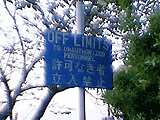
This photo was taken at Yokosuka radio beacon station.
ch. 100
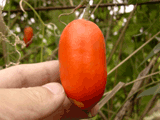
Karasuuri is a wild vine. Its red fruit is a symbol of autumn. It is not used for food. You cannot find a karasuuri in a well-maintained garden.
ch. 105, 107

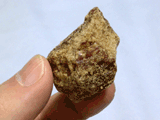
The ones shown in my photos are normal, not "super".
ch. 123
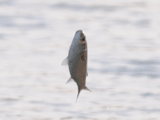
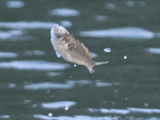
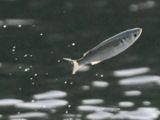
Bora is a kind of mullet. It jumps often.
ch. 128
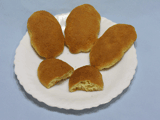
A konohapan is a leaf-shaped cookie made with flour, sugar, egg and leavening agent.
Konohapan is popular in the east end area of Chiba, including Iioka.
ch. 135
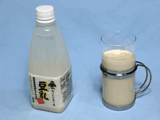
Tonyu (soy milk) is a milk-like product made from soybeans and water.
It may look like cow's milk but it does not taste or smell like cow's milk. Unflavoured soy milk is not for drink, but for making tofu. Flavoured soy drinks can be found in every supermarkets in Japan. You can say tonyu is "traditional" when talking about making tofu, but you cannot when talking about drinking it.
It does not contain animal protein.
Japanese people don't put soy milk in coffee.
ch. 136
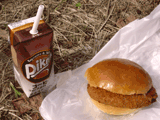

A korokkepan is a sandwich with the bun and korokke. Korokke is deep-fried breaded mashed potatoes.
Korokkepan are cheaper than hamburgers but not cheaper than anpan.
ch. 136
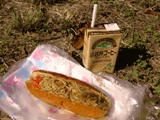
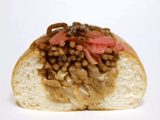
A yakisobapan is a sandwich with the bun and yakisoba. Yakisoba is Japanese-style chow mein, stir-fried noodles.
Yakisobapan are cheaper than hot dogs but not cheaper than anpan.
Japanese word 'soba' usually means buckwheat or noodles made from buckwheat but in this case it just means "noodles". Yakisoba is made from wheat flour.
ch. 136
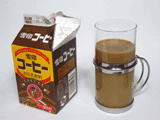
(Megmilk's 'Yukijirushi Kohi', "Snow brand coffee")
Kohi-gyunyu is coffee-flavored sugar-added milk. It is served cold. It is "milk" with coffee and sugar, rather than "coffee" with milk. About 70% of kohi-gyunu is milk.
Currently there is no 'kohi-gyunyu' officially due to the law that prohibits claiming milk that contains additional ingredients as 'gyunyu'. 'Gyunyu' means "cow's milk".
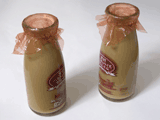
(Bottled kohi-gyunyu by Kimura Milk. You can drink directly from the bottle.)
ch. 137

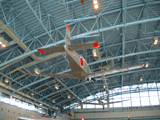
T-34 Mentor is a trainer aircraft.
This one is in Hamamatsu air base.
from 'Kumabachi no koto', A short story by Ashinano Hitoshi
Kumabachi is a kind of carpenter bee. It is often mistranslated as "bumble bee".
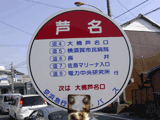
A bus stop named 'Ashina'. Note that the kanji 'na' is different from that of Ashinano. Ashina is the name of a district in Miura peninsula.
Hasse is the name of a town ('Hasse-machi').
This picture shows a sign of a T-intersection that is named 'Hasse chuzaisho'. A 'chuzaisho' is a police substation.
This is a dentist's office named 'Hasse shika'. 'Shika' means dental surgeon.
'Hasse' post office.
Note that the kanji 'se' is different from Alpha's family name.
I don't personally think it has anything to do with that stratospheric aircraft, but this is a fish called "tarpon". It inhabits the Atlantic Ocean.
 [play video] Windows Media
[play video] Windows Media
[play video] QuickTime
The one shown here lived in an aquarium, Tokyo Sea Life Park (Kasai Rinkai Suizokuen).
Buy the books. Support the author.
You can purchase YKK books thru some online bookstores.
YKK - Behind the Panels > Extras
2005-07-03/2012-06-04 KIMOTO Go
Comments, suggestions, spelling and grammatical corrections are welcomed.